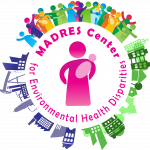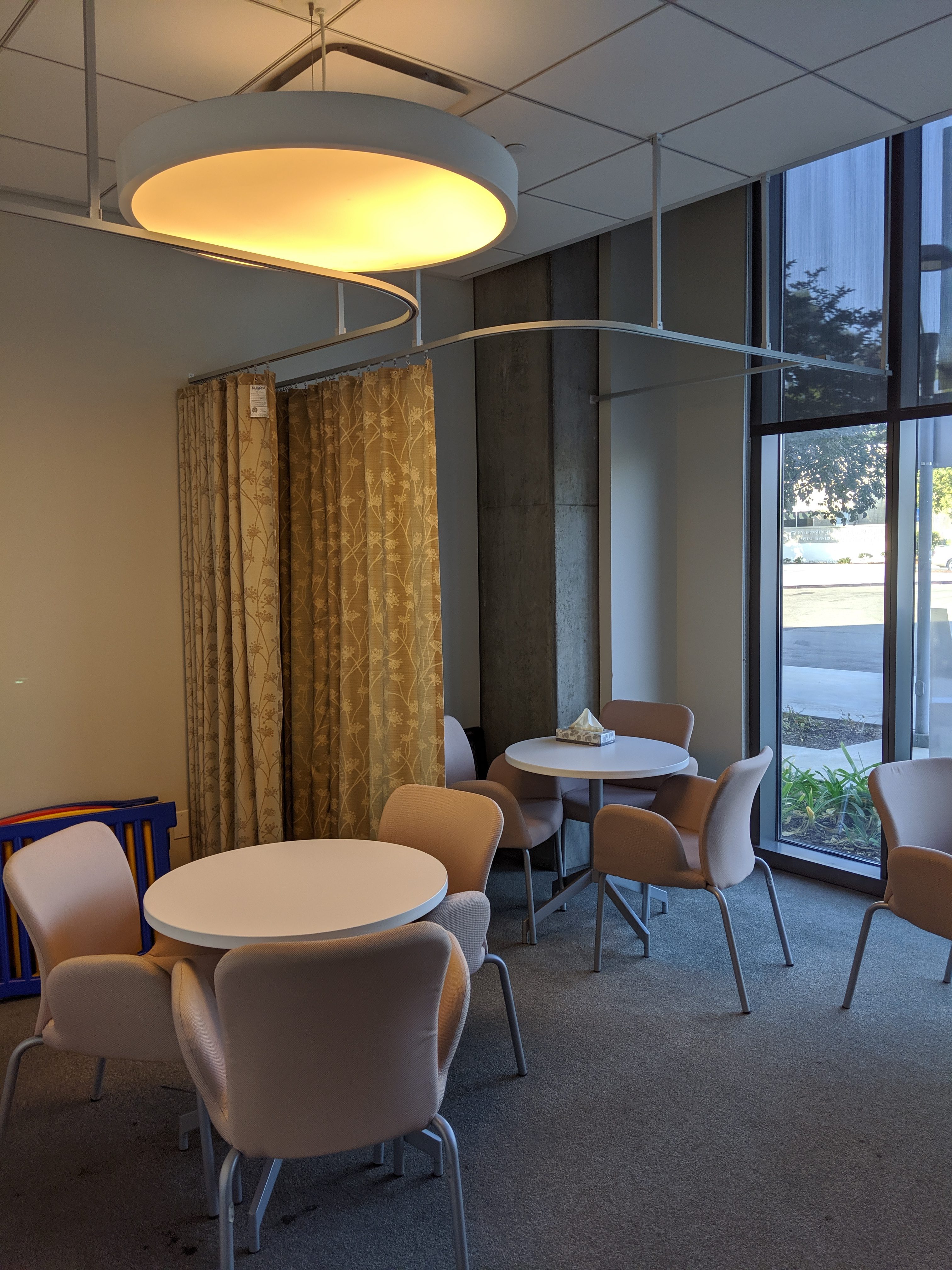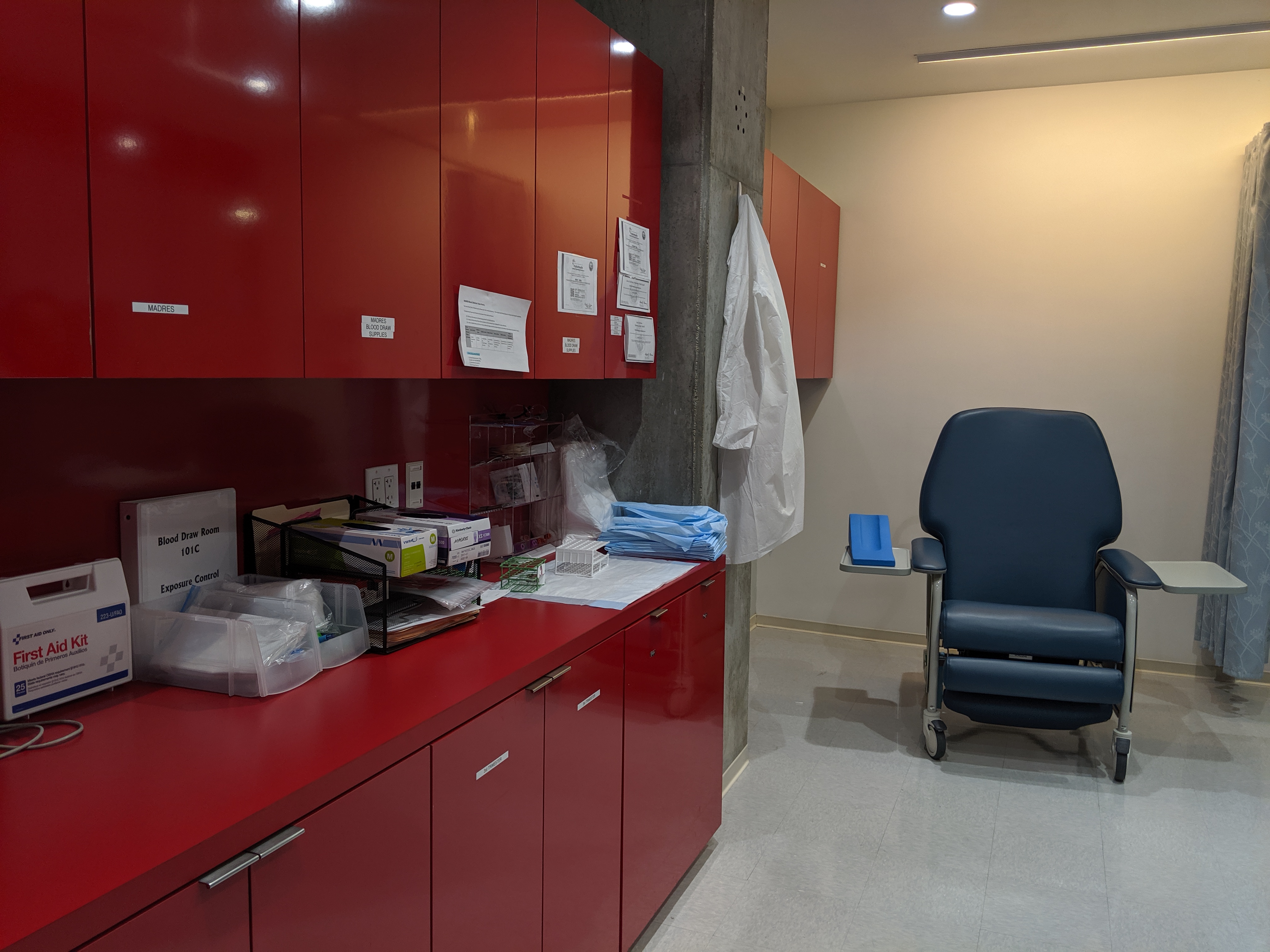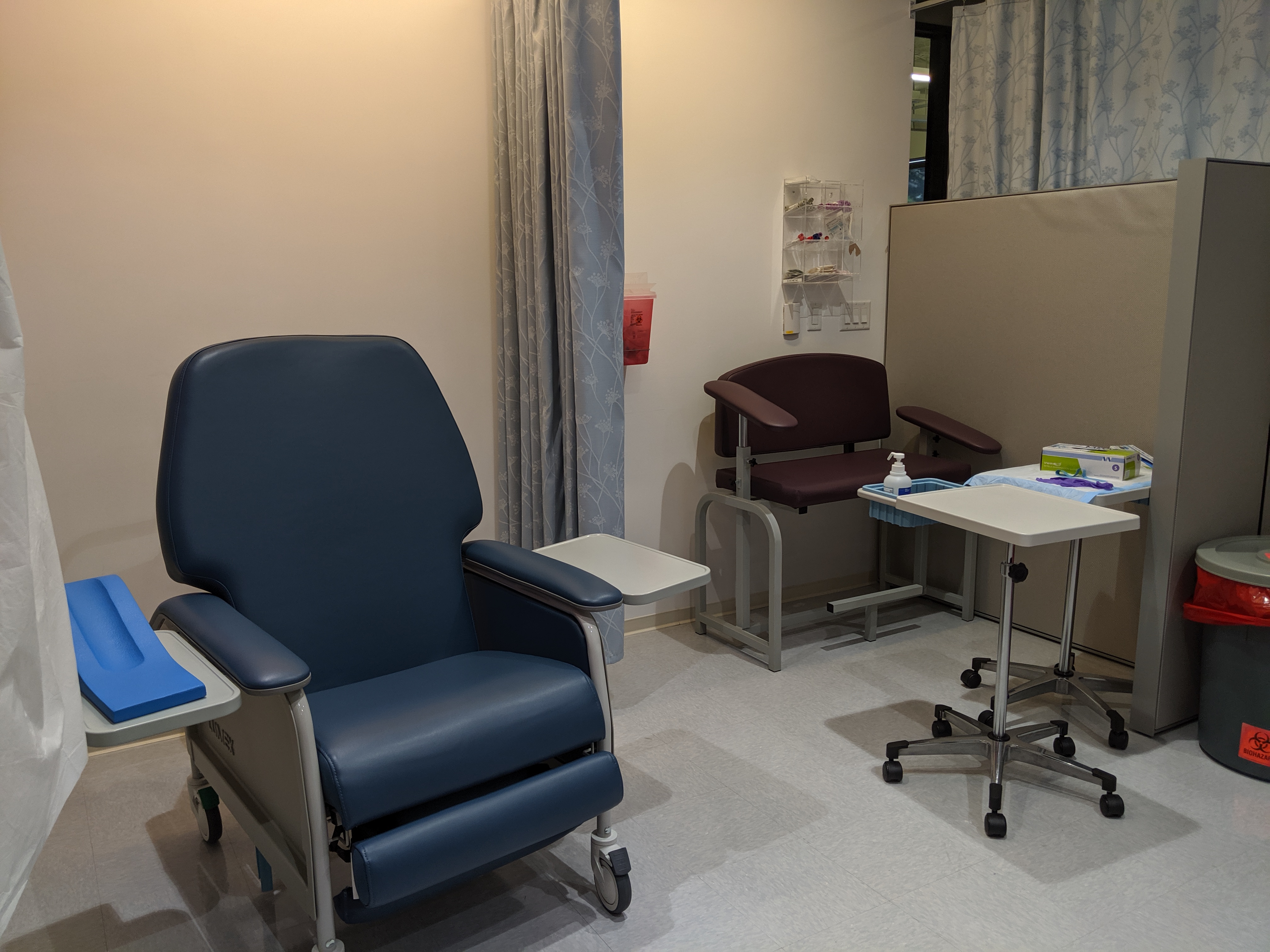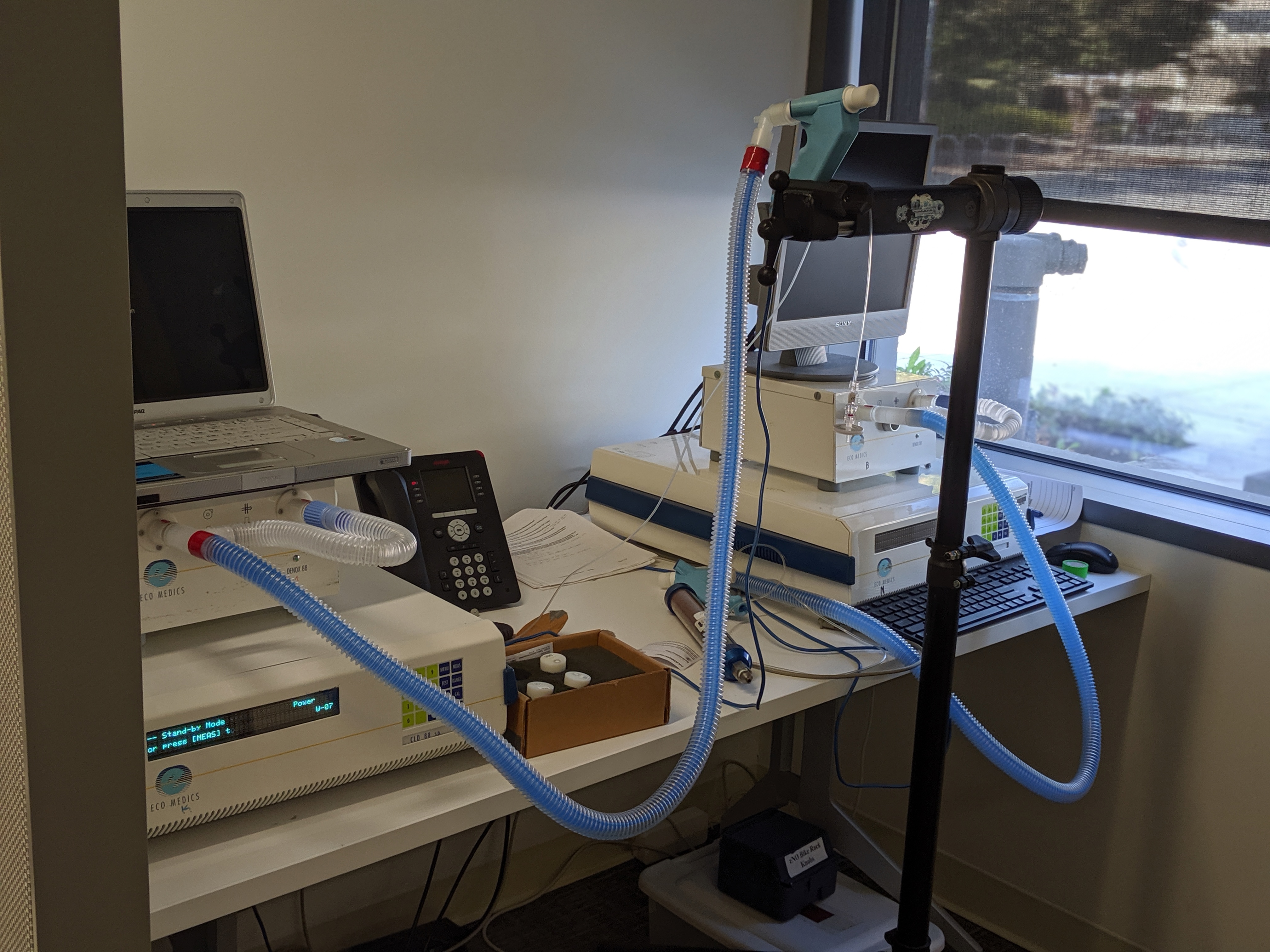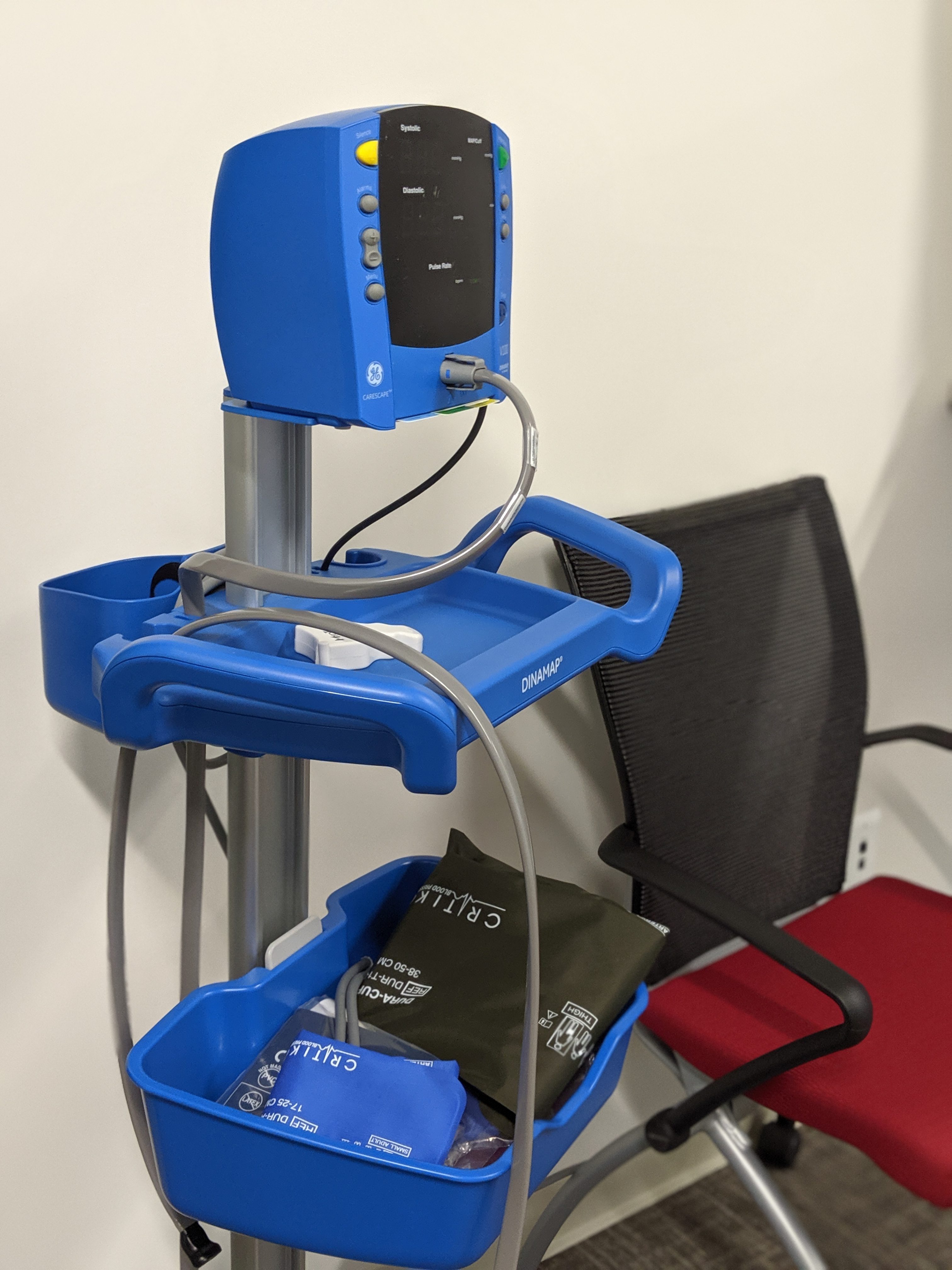FUNDED PILOT PROJECTS

2023 Awardees

Air pollution, community-level social and neighborhood factors, and depression and anxiety in children of US born and immigrant parents
Principal Investigators:
Max Aung, PhD, MPH Assistant Professor of Population and Public Health Sciences, USC
Carlos Cardenas-Iniguez, PhD, MA Postdoctoral Scholar - Research Associate, Population and Public Health Sciences, USC
maxaung@usc.edu
carlosc2@usc.edu
Childhood depression and anxiety are major mental health conditions that pose risks for chronic health conditions later in life. Recent estimates between 2016-19 show that approximately 2.7 million children aged 3-17 have diagnosed depression, and 5.8 million had diagnosed anxiety. Depression and anxiety influence daily function, including eating, sleeping, and attention in school. In the US, an estimated $225 billion was spent on mental health services in 2019, which is a 52% increase since 2009. Reduction in modifiable risk factors for depression and anxiety has the potential to not only hinder growing rates in life course chronic health conditions, but also yield societal savings in healthcare costs related to treatment and services.
Substantial mechanistic evidence indicates that chronic inflammation can interfere with neuronal signaling and influence the development of neurobehavioral conditions such as depression and anxiety. Interestingly, air pollution exposures to fine particulate matter (PM2.5) can affect a wide array of chronic health conditions, including eliciting neuroinflammatory responses, and thus may exist in the early causal pathway of childhood depression and anxiety. Notably, air pollution is a modifiable environmental risk factor that can be mitigated through robust exposure assessment and regulatory action. Thus, understanding the contribution of air pollution on childhood depression and anxiety may ultimately prove fruitful towards helping reduce the overall burden of these conditions.
Beyond the neurotoxic effects of air pollution exposure on brain health, individual- and community-level factors may further increase a child’s susceptibility to these harmful effects on neuromaturation, which may, in turn, impact mental health. Social factors such as neighborhood environment, educational attainment, and poverty can interact with environmental air pollution exposures to increase the risk of depression and anxiety across the US population. This relationship between sociodemographic factors, neighborhood factors, and health outcomes is consistent with a structural and social determinants of health framework which posits that “upstream” structural factors (i.e., economic, political, sociocultural) impact “downstream” neighborhood and community-factors and micro-level individual factors. Therefore, it is crucial to consider the role of community-level social and built environmental factors in understanding the impact of PM2.5 exposures on mental health. Furthermore, among under-resourced communities, children of immigrants can face social challenges that contextualize the exposure-outcome relationships for depression and anxiety, such as psychosocial stress related to acculturation. Our proposed study goal is to investigate the risk of childhood depression and anxiety attributable to concurrent air pollution and neighborhood features while considering history of immigration.
Our project leverages the nationwide longitudinal Adolescent Brain Cognitive Development (ABCD) Study of 9- and 10-year-olds (N=11,873) to examine childhood air pollution exposure effects on neurobehavioral development and child health in a sample of children of diverse sociodemographic backgrounds across 21 U.S. cities. We will integrate residential-based annualized PM2.5 estimates with neighborhood features (i.e., greenspace, urbanicity, access to services, neighborhood disadvantage, social capital) and childhood mental health behaviors using the Child Behavior Checklist (CBCL) during ages 9-10. We will also integrate information on immigration and proxies of acculturation. We will conduct the following aims to achieve our study goal:
Aim 1a: Assess the extent to which immigrant status and cultural domains modify the association between concurrent air pollution, neighborhood features, and CBCL domains for depression and anxiety.
Hypothesis: The unique experiences of immigrant families will reveal differential risk profiles for air pollution and neighborhood features in association with childhood depression and anxiety.
Aim 1b: Assess robustness of these relationships based on modeling choices using multiverse analyses (i.e., specification curve and vibration of effects analyses).
Hypothesis: Air pollution and neighborhood disadvantage jointly enhance the risk of developing childhood depression and anxiety.
Impact: the proposed study will reveal emerging evidence of the joint contributions of air pollution and neighborhood features on childhood anxiety and depression in a diverse study sample in the US. Findings will directly inform prioritization of interventions aimed at reducing exposures and supporting public programs to enhance neighborhood features in marginalized communities. Thus, there is substantial potential for this proposal to advance environmental justice efforts across the US. The proposal will also provide critical preliminary evidence to expand on environmental and neurobehavioral data in the ABCD cohort to pursue future R01 proposals, as well as collaborative consortium projects.

Inland Empire Warehouse Development and Children's Respiratory Health Study
Principal Investigator: Nemmi N. Cole, PhD
Postdoctoral Scholar - Research Associate, Department of Population and Public Health Sciences, USC
nemmicol@usc.edu
Over the past decade, the rapid growth of the logistics industry has brought about a vast rise in
mega-warehouse developments in Southern California, specifically in the Inland Empire (I.E.).
This region once known as the ‘Orange Empire’ for its vast agricultural and citrus lands is now
third in the United States (U.S.) for mega warehouse occupancies, spanning approximately 174
million square feet of industrial space. Warehouse developments come with significant disruption
to the local land use, including increased traffic congestion, noise, depreciation of property value,
and magnifying local air pollution. The logistical activities associated with warehouses have
become a major cause of industrial emissions and progressing environmental pollution. There is
limited research on the environmental and health impact of warehouses. Additionally, to our
knowledge, there has not been a study examining the impact that warehouses and associated
logistical activities have on the health outcomes of neighboring communities. The Inland Empire
Warehouse Development and Children’s Respiratory Health study seeks to leverage a
community-engaged approach to evaluate the impact of warehouses and warehouse-related
logistical activities on children’s respiratory health.
The study aims to:
1) advance community
capacity and increase engagement and understanding of exposure risks, environmental health,
and risk factors impacting the respiratory health of children through education workshops, and
2)
evaluate the association between racial disparities, warehouse developments, and the respiratory
health symptoms of elementary school-aged children. This planned data analysis will contribute
to the understanding of warehouses and warehouse-related logistical activities and respiratory
health among children, community concern, and one of the overall goals of the Southern
California Environmental Health Sciences Center (SCEHSC) parent grant.
The Candidate will
enhance community-engaged research skills and gain training in environmental epidemiological
methods. She will strive to promote Environmental Health Literacy among all participants and
stakeholders through the translation of findings from this pilot project. The objectives align with
the SCEHSC aims, advancing scientific research, promoting community engagement, advancing
translational research, and training new researchers. The completion of this study will provide
critical insight into warehouse developments and their impact on air pollution, coupled with
expanding our understanding of how the proximity to and density of warehouse facilities impacts
respiratory health in children. This study will be among the first to examine the relationship
between air quality, and warehouses to childhood and longitudinal respiratory health symptom
outcomes. The training will position the Candidate to pursue an independent academic career
and make significant contributions to the field of exposure disparities and health outcomes among
environmental justice communities.

Neighborhood Socioeconomic Conditions and Disparities in Birth Weight: Investigating Mediation by Prenatal Exposure to Multiple Air Pollutants
Principal Investigator: Nan Ji, PhD
Postdoctoral Scholar - Research Associate, Department of Population and Public Health Sciences, USC
jinan@usc.edu
Race/ethnicity minorities are more likely to live in neighborhoods with greater socioeconomic risk, which generates disparities
in birth weight (BW) and related health conditions and diseases later in life. A key step for effective interventions is identifying
modifiable factors on the causal pathway between neighborhood socioeconomic (NSES) and BW. Despite the strong evidence
that prenatal co-exposure to multiple air pollutants is impacted by NSES and associated with downstream BW, no studies have
examined the mediating role of prenatal co-exposure to multiple air pollutants on the association of NSES with BW. Traditional
mediation approaches have limited ability to assess the mediation effect of time-varying, correlated air pollution data. We aim
to address these knowledge gaps by incorporating dimension-reduction approaches in the mediation framework and by applying
the mediational g-formula to accommodate time-varying mediators in the rich data of an ongoing MADRES cohort, a pregnancy
cohort comprised primarily of low-income, Hispanic women. We will use Child Opportunity Index from the social and economic
domain (COI-SE) as a summary measure of 8 indicators of NSES. Pregnancy-averaged and trimester-specific concentrations of 10
air pollutants will be the primary mediators. We will use infant birth weight as the primary outcome.
Aim 1 will estimate the
associations of COI-SE with BW.
Using the new mediation framework, Aim 2 will examine the mediating role of prenatal exposure
to
a) pregnancy-averaged individual air pollutants;
b) pregnancy-averaged multiple air pollutants;
c) time-varying individual air
pollutants;
d) time-varying multiple air pollutants on the association of COI-SE with BW.
Evidence of the causal role of air
pollution in mediation analyses can guide public health interventions that reduce prenatal exposure to air pollutants, especially
among health disparate populations and to mitigate the adverse aspects of neighborhood conditions, and promote ultimately
healthy birth outcomes.

Examining the impacts of social context on Latina mothers' and their infants' mental health: An ecological momentary assessment study
Principal Investigator: Santiago Morales, PhD
Assistant Professor of Psychology and Pediatrics, USC Dornsife
santiago.morales@usc.edu
Postnatal maternal anxiety and depression are common, costly, impacting maternal health, parenting abilities, as well as the infant’s health and developmental outcomes. Importantly, postnatal maternal anxiety and depression disproportionately impact marginalized communities like Latina mothers. However, the causes of these mental health disparities among Latina mothers remain unclear. This is in part because the evidence surrounding postnatal anxiety and depression and their impacts on children’s outcomes comes from studies that focus on effects across individuals with limited retrospective assessments of mother and infant mental health. Existing measures are not able to capture the interpersonal and sociocultural factors that impact Latina mothers’ and their infants’ mental health in everyday life. The current proposal addresses these existing limitations by utilizing a novel Ecological Momentary Assessment (EMA) protocol to intensively sample maternal and infant negative and positive affect on 100 Latina mothers and their infants. We will first optimize out novel protocol by examining its feasibility and acceptability using a mixed methods approach. Moreover, our EMA protocol will allow us to capture the effects of sociocultural processes such as familismo and discrimination on maternal and infant mental health with high ecological validity. Specifically, we expect that mothers high on familismo will benefit the most from being in the presence of close companions (e.g., family), highlighting a potentially protective sociocultural factor. In contrast, we expect experiences of discrimination to negatively impact maternal mental health. Moreover, we expect that these effects of sociocultural processes (i.e., familismo and discrimination) will also impact infants’ mental health and that these effects will be mediated by the effects of sociocultural processes on maternal mental health. Overall, the current proposal will improve postnatal mental health and help address mental health disparities by identifying and better understanding malleable early risk and protective factors that may be particularly relevant to marginalized communities.
2022 Awardees

Thriving While Black: Black Birth Equity Workers Glowing Through COVID-19
Principal Investigator: Kacie C.A. Blackman, PhD
Part-Time Lecturer for the Department of Population and Public Health Sciences, USC
kaciebla@usc.edu
The proposed project is relevant to public health and the MADRES Center because it focuses on the impact of structural racism (discrimination in medical settings), perceived stress, wellbeing and burnout risk on acute and chronic stressor response (salivary cortisol, alpha-amylase(sAA), and uric acid(sUA)) among maternal and child health paraprofessionals (prenatal, postpartum, perinatal doulas). In the US, black pregnant persons (and babies) are disproportionately at a higher risk for morbidity and mortality. Many times doulas are of reproductive age and thus may be at risk of adverse maternal health, in particular doulas of color. Doula assisted perinatal-care has been shown as a successful strategy on positive health outcomes. The degree to which improved birth outcomes and decreased stress is achieved may be dependent on the personal and work stress and quality of life of doulas that provide services. However, there is limited data on how doulas’ stress plays a role in the effectiveness of birth outcomes (and stress) in already health disparate populations and if that is related to the quality of services provided or their own wellbeing and risk of burnout. Our long-term goal is to develop a repository of biospecimen samples (saliva) among doulas to better understand their chronic disease risk while supporting structural changes in environmental protections and public awareness. More specifically, the proposed study aims to:
1. Determine the effects of doula race, client race, and their interaction on physiological stress
measures (salivary cortisol, sAA and sUA levels).
2. Determine the effects of physiological stress on risk of burnout and wellbeing in doulas.

Racial discrimination, mental health, and the attenuating role of Black youths' egocentric racial socialization networks
Principal Investigator: Chardee Galan, PhD
Assistant Professor of Psychology, USC Dornsife
chardeeg@usc.edu
Racial discrimination disproportionately impacts Black youth, increasing vulnerability for poor mental health. Studies have identified racial socialization (RS) messages as protective against the negative impacts of racial discrimination. Yet, research has primarily focused on parental RS agents, overlooking the role of other supportive figures. The proposed project will apply a novel egocentric social network analysis (SNA) approach to define Black youths’ support systems and identify sources of RS messages within these networks. Guided by a socio-ecological perspective, this study has three aims:
1) assess the feasibility and acceptability of using SNA to examine Black youths’ RS networks;
2) describe youths’ RS networks across family, school, and community contexts; and
3) elucidate how Black youths’ RS networks impact their mental health (anxiety, depression, suicidality) in the context of racial discrimination.
The central hypotheses are that:
(1) receiving RS messages from ties across environmental contexts will attenuate the association between discrimination and mental health symptoms, and
(2) Black youth with stronger RS support networks will be more resilient to the negative impacts of racial discrimination on mental health.
We will achieve these aims by engaging 50 10-to-14-year-old Black youth and their primary caregivers in a study involving surveys of youth mental health and racial discrimination experiences. Youth will also complete a SNA interview; they will name support ties, describe the nature and quality of these relationships, and note the content of RS messages provided by these individuals. Feasibility and acceptability will be assessed with post-assessment surveys administered to all participants, as well as qualitative interviews conducted with a subset of youth (n=10-15). Findings will guide development of an NIH R01 grant that examines longitudinal associations between RS networks, racial discrimination, and mental health, and will inform the development and implementation of a mental health prevention program that strengthens adolescents’ RS networks.

Cumulative environmental pollution and intergenerational disparities in biological aging
Principal Investigator: Zhongzheng Niu, MD, PhD
Postdoctoral Scholar and Research Associate, USC Department of Population Public Health Sciences
niuz@usc.edu
Minority groups are disproportionately co-exposed to multiple environmental pollution, generating
health disparities among more than one generation. Biological aging is a hallmark of environmental insults and an etiological mechanism underlying health disparities-related diseases. In utero exposures to single environmental pollution have been associated with short TL or less mtDNAcn, two well-established biomarkers of biological aging. However, no studies have examined the cumulative effect of multiple environmental pollution on birth TL or mtDNAcn. Pregnancy is an understudied sensitive window for the mother, but little research focused on environmental pollution with mothers’ biological aging.
Further, understanding whether the mother could pass her disadvantages in biological aging before and/or during pregnancy to the newborn is critical to address intergenerational transmissions of environmental health disparity. We aim to fill these knowledge gaps by leveraging the existing DNA samples and data from the ongoing MADRES cohort. We will use the established CalEnviroScreen Pollution Burden (CES-PS) Score
as a summary measure of 13 types of environmental pollution. We will measure TL and mtDNAcn from maternal blood collected during the first and the third trimesters and from the newborn’s cord blood. We will calculate the difference in these biomarkers between the first and the third trimesters to reflect a maternal pregnancy-related biological aging acceleration.
Aim 1 will examine the association of CES-PS with maternal aging biomarkers (i.e., TL and mtDNAcn) at early pregnancy, their changes over pregnancy, and these aging biomarkers in newborn’s cord blood.
Aim 2 will examine intergenerational transmissions of biological aging from the mother to the newborn via either baseline maternal aging biomarkers (reflecting genetic and preconception background) or changes over pregnancy (reflecting cumulative intrauterine environment). Understanding the cumulative contribution of 13 types of environmental pollution to disparities in biological aging and its transgenerational transmission is a critical first step in reducing health disparities.

Effects of prenatal psychosocial stressors on sex steroid hormones and preeclampsia among health disparity population
Principal Investigator: Intira Sriprasert, MD, PhD
Assistant Professor of Research Obstetrics and Gynecology; Director of Research and Scholarship • KSOM Obstetrics and Gynecology
sriprase@usc.edu
Hypertensive disorders of pregnancy (HDP), particularly preeclampsia, are a leading cause of maternal mortality. Maternal complications of preeclampsia include stroke, organ failure and long-term cardiovascular disease (CVD). Preeclampsia is associated with oxidative stress and endothelial dysfunction, initiated early in pregnancy by dysfunctional placentation. Sex steroid hormones, particularly estrogen, increase dramatically during pregnancy and play an important role in placental angiogenesis. Therefore, diminished estrogen could negatively impact placental angiogenesis and affect overall placentation, contributing to an individual’s risk of developing preeclampsia. Conversely, poor placentation may also lead to inadequate estrogen production by the placenta as well. Psychosocial
stressors have been shown to significantly increase preeclampsia, however, the mechanism is unknown.
We hypothesize that prenatal psychosocial stressors decrease estrogen levels which affect the normal
placentation process leading to increased risk of preeclampsia. This proposed study aims to explore the association between psychosocial stressors and sex steroid hormones with preeclampsia among pregnant women in the Maternal And Developmental Risks from Environmental and Social Stressors (MADRES) cohort who are low income Hispanic women in Los Angeles county.
A nested case-control study will:
1) evaluate the association between prenatal psychosocial stressors on sex steroid hormones;
2) assess the association between sex steroid hormones with preeclampsia; and
3) quantify the association of social stressor with preeclampsia that is explained by sex steroid hormones.
Results from this pilot study could lead to methods for early detection and prevention of preeclampsia through measurement of sex steroid hormones during the prenatal period, especially in pregnant individuals affected by stress. Serum or urine sex hormone measurements may be an early screening tool to detect preeclampsia. Early intervention could significantly decrease preeclampsia morbidity and mortality, to both the mother and the fetus.

Differences in the prenatal built environment and the effect on epigenetic aging among minority populations residing in California
Principal Investigator: Charlie Zhong, PhD
Postdoctoral Scholar, USC Department of Population Public Health Sciences
charlie.zhong@usc.edu
Several studies in recent years have found that the composition of one’s neighborhood, the built environment, is associated with health. The built environment consists of the human caused changes to the environment, such as buildings and roadways and their associated pollutants such as air pollution and artificial light at night. Racial/ethnic minorities are more likely than non-Hispanic Whites to live in less advantaged neighborhoods with higher levels of environmental pollution. These populations are also more likely to move to worse neighborhoods than their non-Hispanic White counterparts. These exposures can cause epigenetic changes to accelerate biological aging and have been associated in adults with increased morbidity and mortality. These epigenetic changes of accelerated aging may be set early in life, placing minorities at a disadvantaged health trajectory across their lifespan. Maternal exposure to pollutants such as air pollution have been associated with epigenetic alterations in children, but it is unknown if they are associated with epigenetic aging.
We are proposing to leverage data collected in a population-based study of childhood cancer in the state of California (California Childhood Leukemia Study, CCLS) to assess if accelerated epigenetic aging in newborns is associated with maternal exposure to environmental pollutants and if disparities exist across different racial/ethnic groups. A total of 1,176 controls in the CCLS have epigenetic data and residential history. In our first aim, we will evaluate if markers of epigenetic aging are associated with the built environment and if differences exist across race/ethnicity. The second part of our study will evaluate changes in the built
environment among participants that have moved and if differences exist across race/ethnicity.
2021 Awardees

Prenatal, Psychosocial and Lifestyle Factors in Mental Health Disparities among Youth
Principal Investigator: Jasmin Alves, PhD
Postdoctoral Researcher, USC Department of Internal Medicine
jalves@usc.edu
Offspring of mothers who had gestational diabetes mellitus (GDM) and/or obesity during pregnancy are at increased risk for mental health disorders. This risk may be greater in minority populations who are disproportionately affected by GDM and obesity during pregnancy and have higher rates of mental health disorders. Yet, evidence is lacking on whether the relationship between prenatal exposure to GDM/maternal obesity and child mental health outcomes may differ by child and mother psychosocial and lifestyle factors.
To address these gaps, the proposed project will be the first study to date to provide a comprehensive strategy to investigate modifying factors in the association between prenatal exposure to GDM/maternal obesity and child mental health. We will leverage our existing cohort of predominantly Hispanic children age 7-15 (R01DK116858) where approximately ~50% of children were exposed in utero to maternal GDM with different degrees of maternal obesity exposure at the time of pregnancy. Importantly, exposure variables were objectively recorded from Kaiser Permanente Southern California (KPSC) electronic medical records (EMR). This rich data source allows us to extract maternal pre-pregnancy weight, height and GDM screening and diagnostic laboratory glucose testing results. Additionally, the availability of sociodemographic (SES) information (including maternal education at birth, household income and race/ethnicity) allows us to minimize information bias and to examine potential moderating effects of SES on relationships between exposures to GDM and/or maternal obesity and children’s mental health outcomes. We will also collect thorough lifestyle assessments from the participants and their mothers to determine how lifestyle factors may also moderate these associations.
By identifying modifiable lifestyle factors in the mother and/or child that could ameliorate mental health in at-risk youth, targeted intervention studies can be tested as an approach to mitigate poor mental health outcomes in children exposed to GDM and/or maternal obesity.

Understanding Social Environment Impacts on Latinx Women’s Use of Cannabis during Pregnancy
Principal Investigator: Rachel Ceasar, PhD
Assistant Professor, USC Department of Population Public Health Sciences
rceaser@usc.edu
Cannabis is the most commonly used substance during pregnancy. The guidelines of the American College of Obstetricians and Gynecologists refrain women from cannabis use during pregnancy because of its potential complications for both mother and child. Despite these recommendations, women report using cannabis for its perceived health benefits, such as to self-treat pregnancy-related nausea and depression. With the increased exposure to unsupported health claims and incomplete information about cannabis safety, understanding the social environments that contribute to women’s use of cannabis during pregnancy is urgently needed, particularly among Latinx women. Latinx are the largest ethnic minority group in the U.S. and often experience significant disparities in access to and quality of substance use treatment. Drawing upon a Theory of Reasoned Action and a National Institute on Minority Health and Health Disparities Research Framework that considers the multidimensional role of the social environment together with gender and ethnicity, I hypothesize that a pro-cannabis social environment may reduce perceived risk of cannabis, thus resulting in increased cannabis use among Latinx women during pregnancy.
For the MADRES Center pilot project, I will conduct qualitative interviews with Latinx women who self-reported cannabis use during pregnancy and reside in Los Angeles, California, where adult use of cannabis is legal. The study will recruit Latinx young adult women who are over 18 years of age, speak either English or Spanish, and were at less than 30 weeks gestation at the time of recruitment from the MADRES cohort study. These findings will be used to develop important data on Latinx women’s cannabis use and cannabis use patterns, administration, and products during pregnancy, thus providing important preliminary data for an R01 on women’s co-use of cannabis with other substances during pregnancy.

The Impact of COVID-19 Containment Measures on the Socioeconomic Incorporation and Psychological Well-being of Venezuelan Migrants and Refugees in Argentina, Chile, and Colombia
Principal Investigator: Deisy Del Real, PhD
Assistant Professor, USC Department of Sociology
deisydel@usc.edu
Across the world, governments have closed their borders and imposed social distancing restrictions to contain the COVID-19 pandemic. Moreover, governments suspended services and slowed the processing of legal residency applications. Consequently, the COVID-19 containment restrictions are forcing some humanitarian migrants to enter international borders without authorization and others to endure undocumented life and transition legal limbos—technically not undocumented but unable to prove legal residency while awaiting their application results. Scholars concur that the receptivity of the national immigration laws impacts migrants the socioeconomic incorporation. However, we know less about how immigration law administrative changes affect immigrants’ ability to enter, obtain legal residency, and thrive in the host society. The proposed study provides a processual account of immigration administration to capture how COVID-19 policy changes affect humanitarian immigrants. Empirically, this study examines the Venezuelan migrants’ situation. Over 5 million Venezuelans have been displaced, and 81% have moved to other South American countries. The governments in South America had responded to the Venezuelan migrants and refugees by removing barriers to entry and facilitating their access to legal residency and right. However, COVID-19 containment measures are undoing the benefits of this initial governmental welcome. Research on other populations shows that legal immigration status stratifies access to resources and opportunities, which can exacerbate socioeconomic inequities and harm migrants’ psychological well-being. Thus, drawing on in-depth interviews before and during the pandemic, the proposed study examines how COVID-19 containment policies affect the economic, social, and psychological well-being of Venezuelans with different immigration legal statuses. We expect Venezuelan immigrants who secured permanent legal residency or citizenship status before the pandemic to experience less economic hardships, societal antagonism, and distress than immigrants who are undocumented or whose legal residency applications are in limbo.

Identifying Healthcare Disparities during Wildfire Disasters among Children
Principal Investigator: Natasha Gill, MD, MPH, FAAP
Assistant Professor, USC Department of Clinical Pediatrics & CHLA Division of Emergency & Transport Medicine
ngill@chla.usc.edu
Pediatric wildfire exposure in Southern California (CA) represents a clear and identifiable environmental health disparities problem. However, access to healthcare, smoke exposure mitigation, and evacuation strategies have not been comprehensively studied or characterized based on healthcare disparities. Knowing people of color and lower socio-economic status are more likely to experience adverse health effects during disasters and smoke exposure is associated with increased pediatric respiratory morbidity, health disparities among minority children are likely to be compounded during wildfires. Moreover, the current COVID-19 pandemic has highlighted supply and resource issues for masks, caregiver support, and preparation among vulnerable families in Los Angeles (L.A.) county.
This pilot study proposes to understand the extent to which wildfire preparation and pollutant exposure affects L.A. county’s pediatric population from a health disparity lens. Specifically we seek to better characterize the phenomena of unequal burden of adverse wildfire health impacts in children by studying demographic, psychosocial, and resource-related factors with the ultimate goal to provide targeted responses that decrease morbidity and mortality in these vulnerable communities.
This is a mixed methods study design using quantitative cross-sectional surveys and qualitative focus groups among families seeking care at CHLA, a centralized, urban, tertiary care pediatric institution in L.A. county that serves a large, diverse patient population vulnerable to both wildfires and disparities. We have assembled a talented team of multi-disciplinary experts to facilitate junior faculty growth and the study as a whole. The final deliverable is a low-cost, culturally sensitive, wildfire preparedness toolkit that can be deployed to at-risk households and healthcare providers using targeted dissemination strategies. Future extramural grants to study and standardize the toolkit for universal distribution will be essential to promote wildfire preparedness as these unpredictable disasters continue to increase in frequency, duration, and spread threatening more vulnerable populations.

Medium-Term Effects of COVID-19 Crisis on Gender Disparities in Mental Health Among American Parents
Principal Investigator: Maria Prados, PhD
Economist/Research Scientist, USC Dornsife Center for Economic and Social Research
prados@usc.edu
The COVID-19 pandemic and the physical distancing measures taken to address it lead to sudden changes in the lives of American families: New childcare demands due to school closures and widespread remote instruction, the need to work from home for many, or decisions about work arrangements trading off exposure to risk and financial needs for others, and a macroeconomic downturn with unprecedented impact on employment, all in the middle of a health care crisis. Households had to adapt their behaviors to the new reality. Evidence suggests that this combination of factors resulted in a heavy burden for mothers trying to juggle work and family care responsibilities.
This project will measure how the pandemic is affecting gender disparities in wellbeing and psychological distress, specifically looking at how the childcare crisis altered the gender balance within households and the outcomes of working mothers. Our goal is to understand the gender differences on the impact of the COVID-19 crisis on the mental health of American parents. As the pandemic drags on, the households’ behavior may change over time. There is significant variation in terms of childcare needs by households, as a few have been able to send their children to school for in-person instruction while most remained in remote instruction. As households adapted to the new reality, some temporary arrangements may have become permanent, like who in the household takes care of the children or who gives up their job to do so. We will measure these effects and any consequences on psychological distress and mental health. For this, we will use rich and unique tracking survey data from the USC Understanding Coronavirus in America panel, which is continuously being collected every two weeks since March 2020.

Cumulative and Interactive Effects of Environmental Disparities on Health and Unmet Health Care Needs in Older Chinese and Korean Asian Americans: A Multilevel Analysis
Principal Investigator: Min-Kyoung Rhee, PhD, MSW
Instructional Assistant Professor, USC School of Gerontology
minkyour@usc.edu
Racial and ethnic health disparities have been one of the long-standing public concerns in the United States. While extensive research efforts have been undertaken to reduce health disparities among racial and ethnic minority populations by examining a wide range of social determinants, there is growing recognition of the importance of environmental contexts in which people live and how they shape people’s health. Existing evidence suggests the presence of a “place effect,” which adversely affects the use of health and healthcare services among racial and ethnic minorities, and this effect is known to be susceptible to older adults. However, despite consistent research findings on the significant role of environmental contexts in health, little is known about how community-level environments influence health and health care outcomes, particularly among older Asian Americans. To address this gap in the literature, the proposed study attempts to examine the mechanisms through which environmental health disparities are produced and structured. In the proposed study, primary data collected from older Chinese and Korean Americans and three secondary data containing contextual information will be combined using a geocoding process to perform a two-level logistic regression. Using Mplus, this study will estimate (1) the main effects of the individual level predictors (Level1), (2) the main effects of neighborhood predictors (Level 2), and (3) the cross-level interactions, with a control of individual-level covariates. The study findings are expected to improve the understanding of the mechanisms of multilevel environmental contexts among older Asian Americans and will inform the development of intervention to effectively address environmental health disparities.
